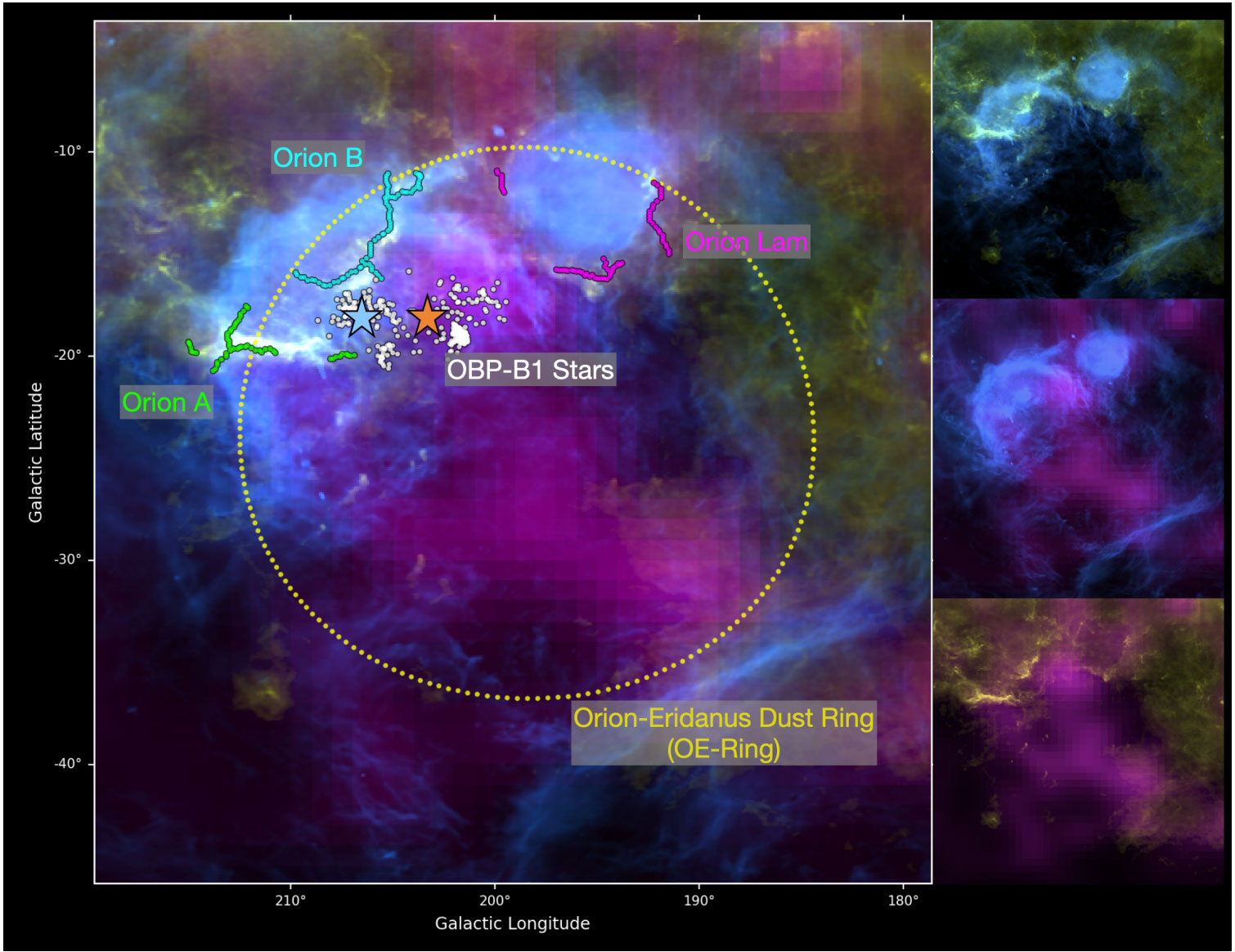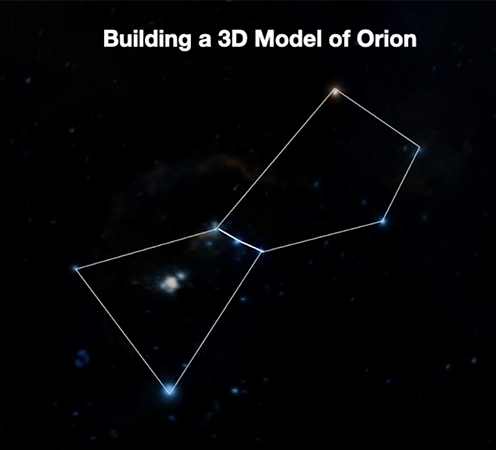Image List
-
 This image shows a 2D view of the Orion complex in different wavelengths of light. Blue corresponds to hot gas, yellow indicates dust, and purple serves as a tracer of recent supernova explosions. The purple arc indicates the rough boundaries of the region containing supernova material that relates to the other structures. The blue star shows the center of a large arc of hot gas, known as Barnard’s Loop (outlined in blue). A large ring of dust that appears in both 2D and 3D data is shown by the yellow circle. Three major clouds of star-forming gas – Orion A (green), Orion B (cyan), and Orion Lam (purple) – are indicated by the colored lines. Superimposed on the image is a cluster of stars that likely produced supernovae in the last 4 million years (shown in white). This cluster is coherently expanding outwards from a single point, which is shown by the orange star.Credit: Michael Foley
This image shows a 2D view of the Orion complex in different wavelengths of light. Blue corresponds to hot gas, yellow indicates dust, and purple serves as a tracer of recent supernova explosions. The purple arc indicates the rough boundaries of the region containing supernova material that relates to the other structures. The blue star shows the center of a large arc of hot gas, known as Barnard’s Loop (outlined in blue). A large ring of dust that appears in both 2D and 3D data is shown by the yellow circle. Three major clouds of star-forming gas – Orion A (green), Orion B (cyan), and Orion Lam (purple) – are indicated by the colored lines. Superimposed on the image is a cluster of stars that likely produced supernovae in the last 4 million years (shown in white). This cluster is coherently expanding outwards from a single point, which is shown by the orange star.Credit: Michael Foley -

Panorama of the plane of the Milky Way as it arches above the Atacama Desert in northern Chile. The deep exposure brings out an array of sky wonders, including Barnard's Loop — the half pink ring visible above the Milky Way band.
Credit: P. Horálek/ESO -

-

This video depicts the Orion complex in both 2D and 3D, showing what astronomers can learn by combining both types of data for a single region.
Credit: Michael Foley, Alyssa Goodman and Catherine Zucker